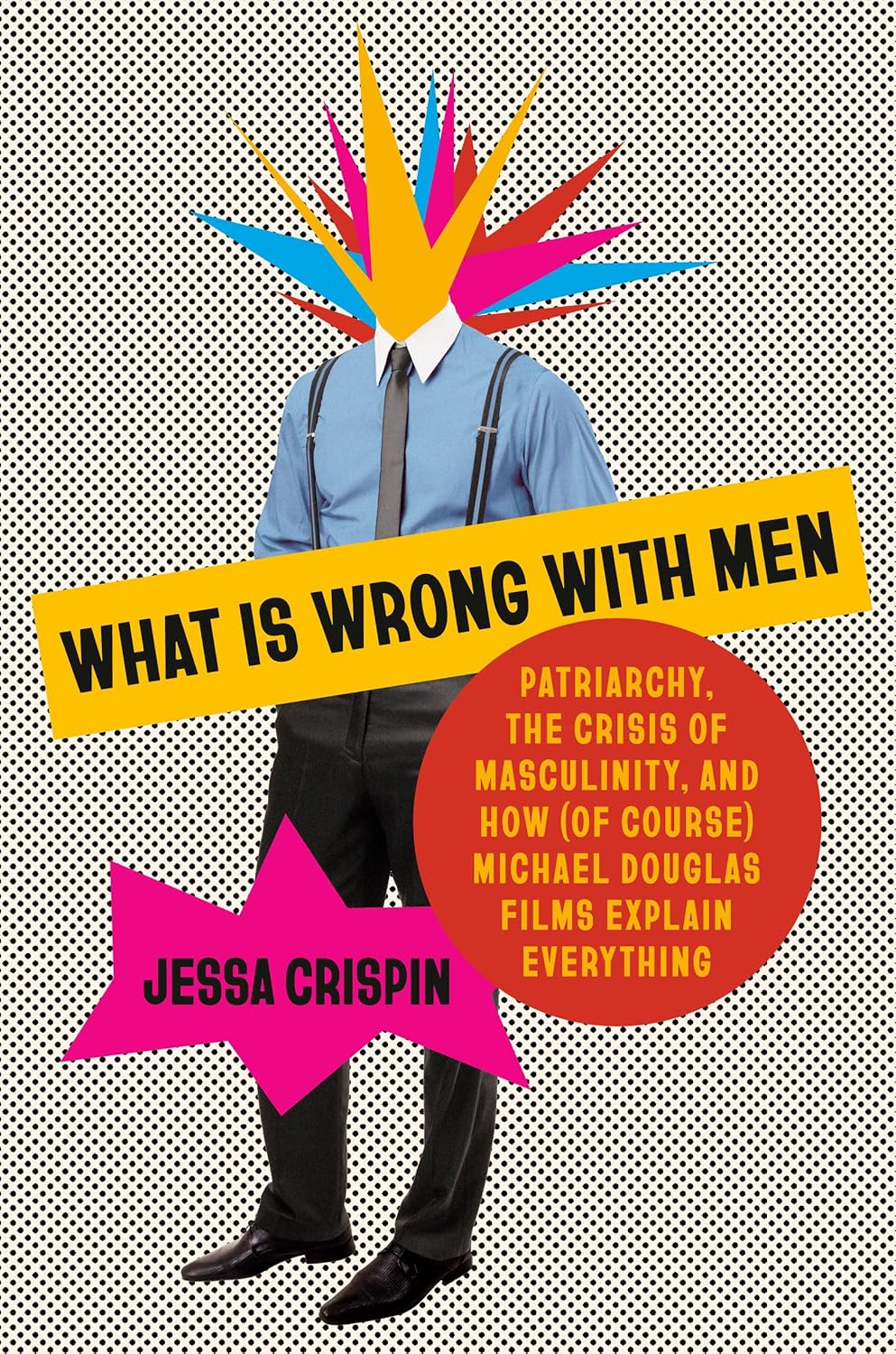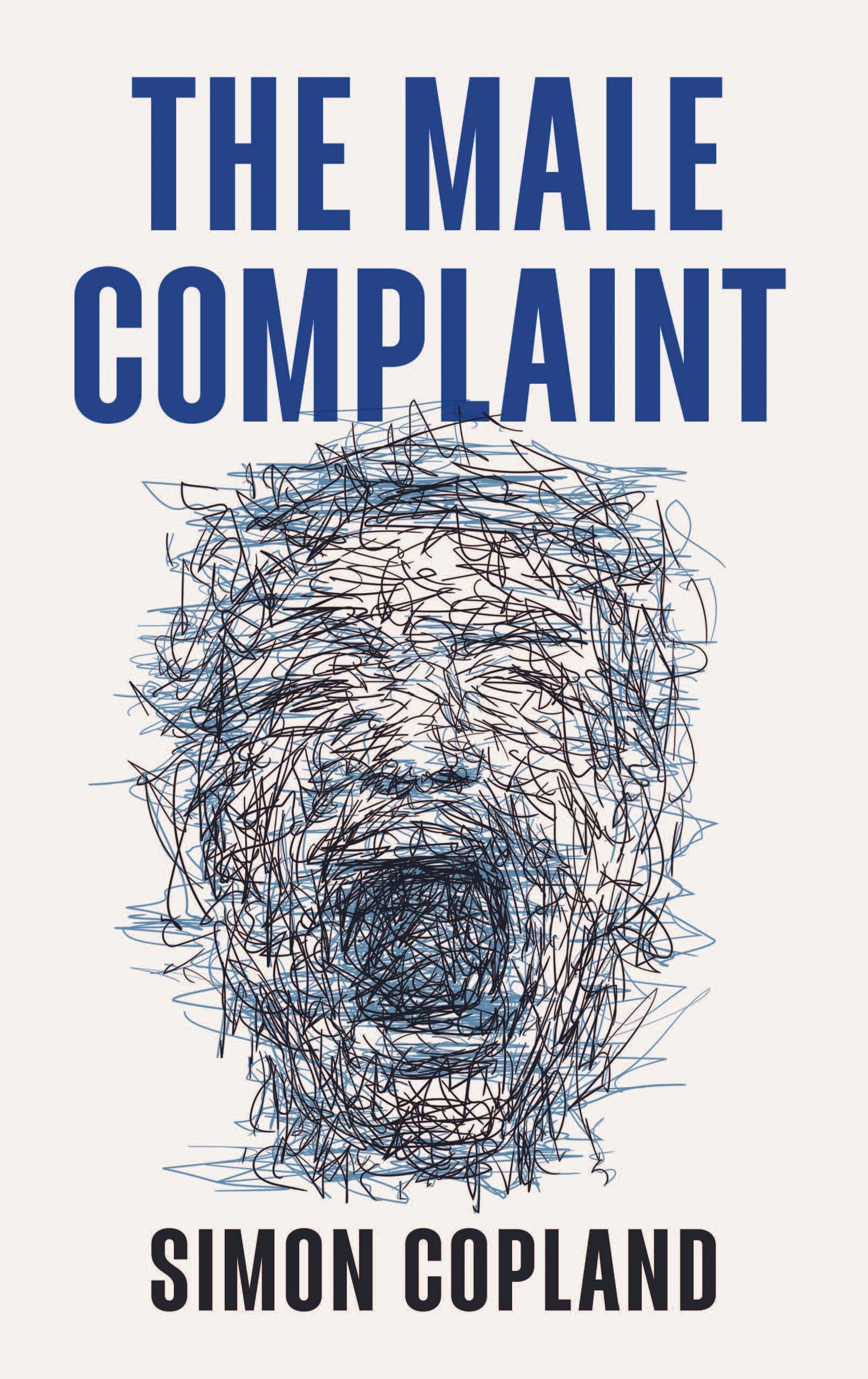
- Free Article: No
- Contents Category: Gender
- Review Article: Yes
- Article Title: Why so unhappy?
- Article Subtitle: Two books about men
- Online Only: Yes
- Custom Highlight Text:
Although the tone of their commentaries differs, Jessa Crispin’s What Is Wrong with Men and Simon James Copland’s The Male Complaint are, more or less, examining the same thing: the workings of the patriarchy in general and what specifically has gone wrong, especially in recent times, with what Crispin refers to as ‘the tug of war’ between men and women.
- Book 1 Title: What Is Wrong with Men
- Book 1 Subtitle: Patriarchy, the crisis of masculinity, and how (of course) Michael Douglas films explain everything
- Book 1 Biblio: Pantheon, US$27 hb, 288 pp
- Book 1 Cover Small (400 x 600):

- Book 1 Cover (800 x 1200):

- Book 1 Readings Link: https://www.readings.com.au/product/9781509562565/the-male-complaint--simon-copland--2025--9781509562565#rac:jokjjzr6ly9m
- Book 2 Title: The Male Complaint
- Book 2 Subtitle: The Manosphere and misogyny online
- Book 2 Biblio: Polity, $32.95 pb, 208 pp
- Book 2 Cover Small (400 x 600):

- Book 2 Cover (800 x 1200):

- Book 2 Readings Link: https://www.readings.com.au/product/9780593317624/what-is-wrong-with-men--jessa-crispin--2025--9780593317624#rac:jokjjzr6ly9m
Intriguingly, both deploy popular culture as the launching pad for their analyses. For Crispin, it is the film characters played by Michael Douglas, primarily spanning the period from Romancing the Stone (1984) to The Game (1997). For Copland, it is Todd Phillips’s Joker (2019), which stars Joaquin Phoenix as the title character and provides a back story for the psychologically disturbed villain who first appeared in 1940 in DC’s Batman comic book series.
Neither writer is especially interested in the films as anything other than cultural artefacts, narrative embodiments of the broader issues they are tackling. Both clearly share the belief that a society’s problems can be delineated through the stories it tells itself, its arts and entertainments, whether inadvertently or knowingly. Both go on to propose – Crispin in passing, Copland in some detail – that the ways in which social media operates and exploits its users has also come to reflect that society’s priorities and problems.
Crispin proposes that many of Douglas’s characters in the 1980s made him ‘a kind of cinematic stand-in for a lot of the men of the time: liberal, tolerant, and clueless’. Second-wave feminism had challenged the patriarchy, offering women liberation; many men, however, felt disenfranchised.
In Fatal Attraction (1987), War of the Roses (1989), and Basic Instinct (1992), she observes, the women (respectively played by Glenn Close, Kathleen Turner, and Sharon Stone) do not adhere to the required, socially entrenched rules, and Douglas’s character in each finds himself at a loss. ‘[T]he remarkable thing about watching these films now’, Crispin writes, ‘is seeing how exasperated and confused he is when talking to women. Why are you so unhappy? Why isn’t this working for you when it’s clearly working for me? What are you doing with that knife, honey?’
Such confusion is the focus of Copland’s thesis. Whereas Crispin casts a wide lens across the failings of Western civilisation and their impact on her topic, his project is less ambitious, but no less telling. His goal is to make sense of the ‘Manosphere’, that male-dominated realm where disaffected men go to share their discontent and to find comfort and guidance.
Acknowledging the influence of Lauren Berlant’s The Female Complaint (2008), Copland makes it clear that, in trying to understand the grievances that have provoked the Manosphere’s various manifestations and manifestos, he is not trying to justify the misogyny or violence that it has encouraged. Rather, the real villains in his, and Crispin’s, postulations are outdated gender stereotypes, capitalism, neo-liberalism, and the idea of the social world as a ‘sexual marketplace’.
Furthermore, a key problem in the responses to these nefarious forces, they both add, has been to mistake individual empowerment for social change. They argue forcefully that aggrieved men are misdirecting their anger towards women, fellow workers, or simply anyone within range. The authors both contend, sensibly, that there are sections of the feminist movement that have missed the point by viewing men as individually responsible for women’s oppression.
For Crispin, this pattern underpins Falling Down (1993). Out of work and separated from his wife and daughter, Douglas’s character – known only as D-Fens (after the licence plate on his car) – goes on a shooting rampage, targeting people with whom Crispin notes he should actually feel a sense of solidarity. Describing the film as a ‘story of misdirected rage’, she argues that D-Fens’s ‘scattershot attempt at getting revenge, attacking women, queers and immigrants instead of the executives and politicians who actually ruined his life, mimics the inability of the modern man loser to confront his true adversaries’.
Copland notes that Joker’s protagonist became a poster boy for alienated men (most notably incels). Like Crispin, he looks to the wider social circumstances afflicting his character – and others like him – for an understanding of his behaviour.
Both writers argue that many women have been able to group together to mostly productive ends to challenge the social arrangements that have oppressed them, whereas men have tended to remain isolated in their confusions and resentments or dragged into online rabbit holes where their complaints only multiply and fester.
Copland is especially good on how social media platforms can be a sinister force, issuing calls for collective action but in reality keeping users separate from each other and denying them any real control. ‘While all the comment on social media platforms is created by individual users, none of us have [sic] control over how that content is used or spread.’
Crispin, like Copland, believes that communities have the ability to exert a corrective power, although she warns of obstacles standing in the way of solidarity: notably, the ‘speculative masculinity’ (for which) the primary goal is triumphing over everyone else, winning at the expense of all, but also some of the absurd excesses of cancel culture.
One could quibble about her general approach. Perhaps other actors of the period and the roles they played might have served her purposes equally well. Perhaps closer attention to cinematic nuance might have illuminated her case – Falling Down is much more self-aware than she allows and Black Rain is far from the unqualified celebration of the American hero that she sees. But the far-reaching thrust of her case is persuasive.
Copland’s book is loaded with throwaway references to scholarly works with which we are assumed to be familiar (as those evaluating his dissertation would presumably have been), sources that could have been acknowledged in endnotes. That said, it is an approach that distracts rather than detracts from his otherwise impressive critique of the Manosphere.
Copland proposes a way to guide potential disciples away from the online influencers lying in wait for them (from Tate to Trump). Instead of pushing ‘counter narratives’ designed to discredit extremist views (‘You’re wrong because …’), he suggests that we need ‘alternative narratives’ which work towards ‘creating joint understandings of the world’ and that we could perhaps usefully deploy humour – perhaps of the kind displayed by Crispin – to achieve our ends. When it comes to the art of persuasion, making someone laugh can be a disarming weapon.


Comments powered by CComment